This week’s Carnival of Space is hosted by Allen Versfeld at his Urban Astronomer blog.
Click here to read Carnival of Space #560.
Continue reading “Carnival of Space #560”

Space and astronomy news
This week’s Carnival of Space is hosted by Allen Versfeld at his Urban Astronomer blog.
Click here to read Carnival of Space #560.
Continue reading “Carnival of Space #560”
Time for another update, this time we’re going to look at what’s new with supernovae. And once again, we’ve got good news, lots of new stuff to report.
We usually record Astronomy Cast every Friday at 3:00 pm EST / 12:00 pm PST / 20:00 PM UTC. You can watch us live on AstronomyCast.com, or the AstronomyCast YouTube page.
Visit the Astronomy Cast Page to subscribe to the audio podcast!
If you would like to support Astronomy Cast, please visit our page at Patreon here – https://www.patreon.com/astronomycast. We greatly appreciate your support!
If you would like to join the Weekly Space Hangout Crew, visit their site here and sign up. They’re a great team who can help you join our online discussions!

Stephen Hawking is rightly seen as one of the most influential scientists of our time. In his time on this planet, the famed physicist, science communicator, author and luminary became a household name, synonymous with the likes of Einstein, Newton and Galileo. What is even more impressive is the fact that he managed to maintain his commitment to science, education and humanitarian efforts despite suffering from a slow, degenerative disease.
Even though Hawking recently passed away, his influence is still being felt. Shortly before his death, Hawking submitted a paper offering his final theory on the origins of the Universe. The paper, which was published earlier this week (on Wednesday, May 2nd), offers a new take on the Big Bang Theory that could revolutionize the way we think of the Universe, how it was created, and how it evolved.
The paper, titled “A smooth exit from eternal inflation?“, was published in the Journal of High Energy Physics. The theory was first announced at a conference at the University of Cambridge in July of last year, where Professor Thomas Hertog (a Belgian physicist at KU Leuven University) shared Hawking’s paper (which Hertog co-authored) on the occasion of his 75th birthday.

According to the current scientific consensus, all of the current and past matter in the Universe came into existence at the same time – roughly 13.8 billion years ago. At this time, all matter was compacted into a very small ball with infinite density and intense heat. Suddenly, this ball started to inflate at an exponential rate, and the Universe as we know it began.
However, it is widely believed that since this inflation started, quantum effects will keep it going forever in some regions of the Universe. This means that globally, the Universe’s inflation is eternal. In this respect, the observable part of our Universe (measuring 13.8 billion light-years in any direction) is just a region in which inflation has ended and stars and galaxies formed.
As Hawking explained in an interview with Cambridge University last autumn:
“The usual theory of eternal inflation predicts that globally our universe is like an infinite fractal, with a mosaic of different pocket universes, separated by an inflating ocean. The local laws of physics and chemistry can differ from one pocket universe to another, which together would form a multiverse. But I have never been a fan of the multiverse. If the scale of different universes in the multiverse is large or infinite the theory can’t be tested. ”
In their new paper, Hawking and Hertog offer a new theory that predicts that the Universe is not an infinite fractal-like multiverse, but is finite and reasonably smooth. In short, they theorize that the eternal inflation, as part of the theory of the Big Bang, is wrong. As Hertog explained:
“The problem with the usual account of eternal inflation is that it assumes an existing background universe that evolves according to Einstein’s theory of general relativity and treats the quantum effects as small fluctuations around this. However, the dynamics of eternal inflation wipes out the separation between classical and quantum physics. As a consequence, Einstein’s theory breaks down in eternal inflation.”
In contrast to this, Hawking and Hertog offer an explanation based on String Theory, a branch of theoretical physics that attempts to unify General Relativity with quantum physics. This theory was proposed to explain how gravity interacts with the three other fundamental forces of the Universe (weak and strong nuclear forces and electromagnetism), thus producing a Theory of Everything (ToE).
To put it simply, this theory describes the fundamental constituents of the Universe as tiny, one-dimensional vibrating strings. Hawking and Hertog’s approach uses the holography concept of string theory, which postulates that the Universe is a large and complex hologram. In this theory, physical reality in certain 3D spaces can be mathematically reduced to 2D projections on a surface.
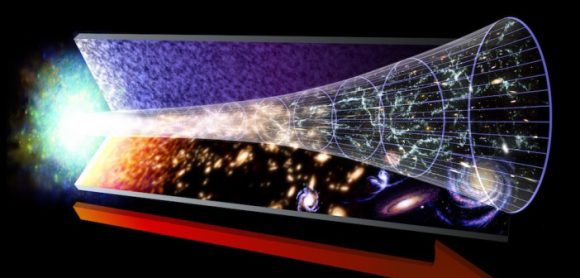
Together, Hawking and Hertog developed a variation of this concept to project out the dimension of time in eternal inflation. This enabled them to describe eternal inflation without having to rely on General Relativity, thus reducing inflation to a timeless state defined on a spatial surface at the beginning of time. In this respect, the new theory represents a change from Hawking’s earlier work on “no boundary theory”.
Also known as the Hartle and Hawking No Bounary Proposal, this theory viewed the Universe like a quantum particle – assigning it a wave function that described all possible Universes. This theory also predicted that if you go back in time to the beginning of the Universe, it would shrink and close off like a sphere. Lastly, it predicted that the Universe would eventually stop expanding and collapse in on itself.
As Hertog explains, this new theory is a departure from that earlier work:
“When we trace the evolution of our universe backwards in time, at some point we arrive at the threshold of eternal inflation, where our familiar notion of time ceases to have any meaning. Now we’re saying that there is a boundary in our past.”
Using this theory, Hawking and Hertog were able to derive more reliable predictions about the global structure of the Universe. In addition, a Universe predicted to emerge from eternal inflation on the past boundary is also finite and much simpler. Last, but not least, the theory is more predictive and testable than the infinite Multiverse predicted by the old theory of eternal inflation.
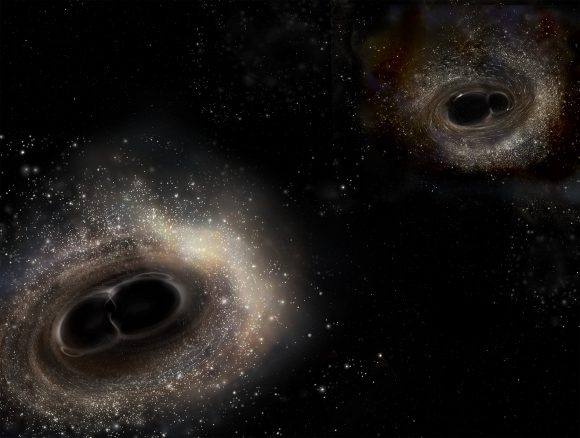
“We are not down to a single, unique universe, but our findings imply a significant reduction of the multiverse, to a much smaller range of possible universes,” said Hawking. In theory, a finite and smooth Universe is one we can observe (at least locally) and will be governed by physical laws that we are already familiar with. Compared to an infinite number of Universes governed by different physical laws, it certainly simplifies the math!
Looking ahead, Hertog plans to study the implications of this theory on smaller scales using data obtained by space telescopes about the local Universe. In addition, he hopes to take advantage of recent studies concerning gravitational waves (GWs) and the many events that have been detected. Essentially, Hertog believes that primordial GWs generated at the exit from eternal inflation are the most promising means to test the model.
Due to the expansion of our Universe since the Big Bang, these GWs would have very long wavelengths, ones which are outside the normal range of the Laser Interferometry Gravitational-Wave Observatory‘s (LIGO) or Virgo‘s detectors. However, the Laser Interferometry Space Antenna (LISA) – an ESA-led plan for a space-based gravitational wave observatory – and other future experiments may be capable of measuring them.
Even though he is longer with us, Hawking’s final theory could be his profound contribution to science. If future research should prove him correct, then Hawking will have resolved one of the most daunting problems in modern astrophysics and cosmology. Just one more achievement from a man who spent his life changing how people think about the Universe!
Further Reading: University of Cambridge
Looking to the future of crewed space exploration, it is clear to NASA and other space agencies that certain technological requirements need to be met. Not only are a new generation of launch vehicles and space capsules needed (like the SLS and Orion spacecraft), but new forms of energy production are needed to ensure that long-duration missions to the Moon, Mars, and other locations in the Solar System can take place.
One possibility that addresses these concerns is Kilopower, a lightweight fission power system that could power robotic missions, bases and exploration missions. In collaboration with the Department of Energy’s National Nuclear Security Administration (NNSA), NASA recently conducted a successful demonstration of a new nuclear reactor power system that could enable long-duration crewed missions to the Moon, Mars, and beyond.
Known as the Kilopower Reactor Using Stirling Technology (KRUSTY) experiment, the technology was unveiled at a recent news conference on Wednesday, May 2nd, at NASA’s Glenn Research Center. According to NASA, this power system is capable of generating up to 10 kilowatts of electrical power – enough power several households continuously for ten years, or an outpost on the Moon or Mars.
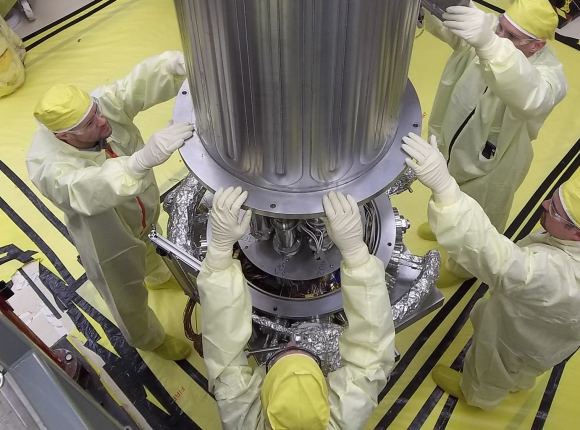
As Jim Reuter, NASA’s acting associate administrator for the Space Technology Mission Directorate (STMD), explained in a recent NASA press release:
“Safe, efficient and plentiful energy will be the key to future robotic and human exploration. I expect the Kilopower project to be an essential part of lunar and Mars power architectures as they evolve.”
The prototype power system employs a small solid uranium-235 reactor core and passive sodium heat pipes to transfer reactor heat to high-efficiency Stirling engines, which convert the heat to electricity. This power system is ideally suited to locations like the Moon, where power generation using solar arrays is difficult because lunar nights are equivalent to 14 days on Earth.
In addition, many plans for lunar exploration involve building outposts in the permanently-shaded polar regions or in stable underground lava tubes. On Mars, sunshine is more plentiful, but subject to the planet’s diurnal cycle and weather (such as dust storms). This technology could therefore ensure a steady supply of power that is not dependent on intermittent sources like sunlight. As Marc Gibson, the lead Kilopower engineer at Glenn, said:
“Kilopower gives us the ability to do much higher power missions, and to explore the shadowed craters of the Moon. When we start sending astronauts for long stays on the Moon and to other planets, that’s going to require a new class of power that we’ve never needed before.”
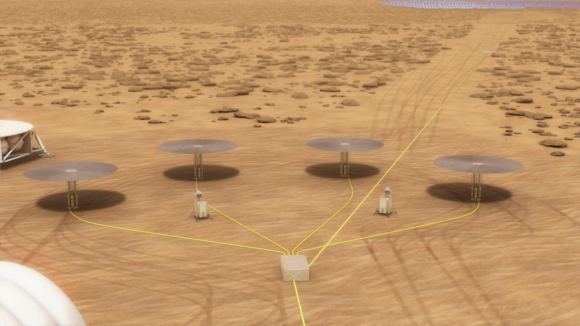
The Kilopower experiment was conducted at the NNSA’s Nevada National Security Site (NNSS) between November and March of 2017. In addition to demonstrating that the system could produce electricity through fission, the purpose of the experiment was also to show that it is stable and safe in any environment. For this reason, the Kilopower team conduct in the experiment in four phases.
The first two phases, which were conducted without power, confirmed that each component in the system functioned properly. For the third phase, the team increased power to heat the core slowly before moving on to phase four, which consisted of a 28-hour, full-power test run. This phase simulated all stages of a mission, which included a reactor startup, ramp up to full power, steady operation and shutdown.
Throughout the experiment, the team simulated various system failures to ensure that the system would keep working – which included power reductions, failed engines and failed heat pipe. Throughout, the KRUSTY generator kept on providing electricity, proving that it can endure whatever space exploration throws at it. As Gibson indicated:
“We put the system through its paces. We understand the reactor very well, and this test proved that the system works the way we designed it to work. No matter what environment we expose it to, the reactor performs very well.”
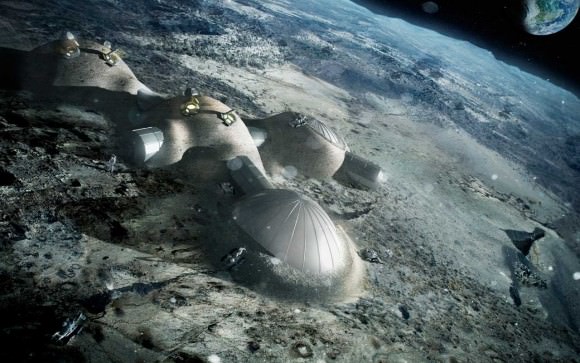
Looking ahead, the Kilopower project will remain a part of NASA’s Game Changing Development (GCD) program. As part of NASA’s Space Technology Mission Directorate (STMD), this program’s goal is to advance space technologies that may lead to entirely new approaches for the Agency’s future space missions. Eventually, the team hopes to make the transition to the Technology Demonstration Mission (TDM) program by 2020.
If all goes well, the KRUSTY reactor could allow for permanent human outposts on the Moon and Mars. It could also offer support to missions that rely on In-situ Resource Utilization (ISRU) to produce hydrazine fuel from local sources of water ice, and building materials from local regolith.
Basically, when robotic missions are mounted to the Moon to 3D print bases out of local regolith, and astronauts begin making regular trips to the Moon to conduct research and experiments (like they do today to the International Space Station), it could be KRUSTY reactors that provide them will all their power needs. In a few decades, the same could be true for Mars and even locations in the outer Solar System.
This reactor system could also pave the way for rockets that rely on nuclear-thermal or nuclear-electric propulsion, enabling missions beyond Earth that are both faster and more cost-effective!
And be sure to enjoy this video of the GCD program, courtesy of NASA 360:
Further Reading: NASA
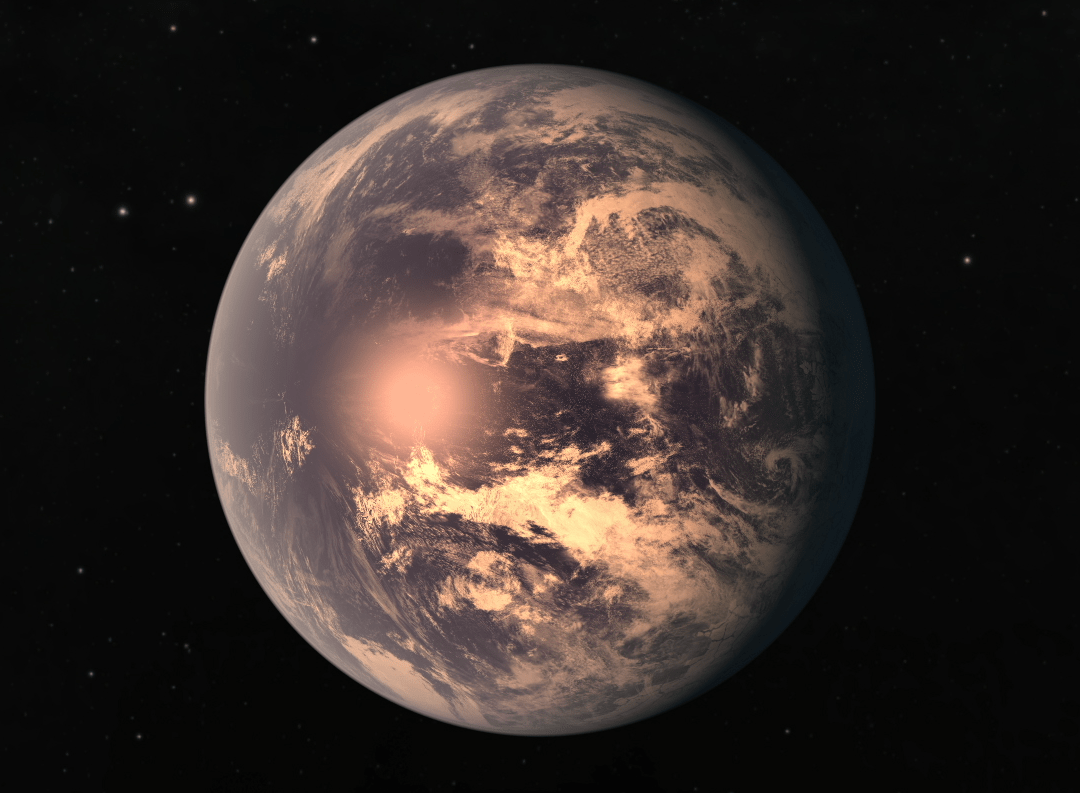
In February of 2017, a team of European astronomers announced the discovery of a seven-planet system orbiting the nearby star TRAPPIST-1. Aside from the fact that all seven planets were rocky, there was the added bonus of three of them orbiting within TRAPPIST-1’s habitable zone. Since that time, multiple studies have been conducted to determine whether or not any of these planets could be habitable.
In accordance with this goal, these studies have focused on whether or not these planets have atmospheres, their compositions and their interiors. One of the latest studies was conducted by two researchers from Columbia University’s Cool Worlds Laboratory, who determined that one of the TRAPPIST-1 planets (TRAPPIST-1e) has a large iron core – a finding which could have implications for this planet’s habitability.
Continue reading “One of the TRAPPIST-1 Planets Has an Iron Core”
NASA has some pretty advanced concepts in mind when it comes to the next generation of space telescopes. These include the Transiting Exoplanet Survey Satellite (TESS), which recently took to space, as well as the James Webb Space Telescope (JWST) (scheduled to launch in 2020) and the Wide-Field Infrared Survey Telescope (WFIRST), which is still in development.
Beyond these, NASA has also identified several promising proposals as part of its 2020 Decadal Survey for Astrophysics. But perhaps the most ambitious concept is one that calls for a space telescope made up of modules that would assemble themselves. This concept was recently selected for Phase I development as part of the 2018 NASA Innovative Advanced Concepts (NIAC) program.
The team behind this concept is led by Dmitri Savransky, an assistant professor of mechanical and aerospace engineering at Cornell University. Along with 15 colleagues from across the US, Savransky has produced a concept for a ~30 meter (100 foot) modular space telescope with adaptive optics. But the real kicker is the fact that it would be made up of a swarm of modules that would assemble themselves autonomously.

Prof. Savransky is well-versed in space telescopes and exoplanet hunting, having assisted in the integration and testing of the Gemini Planet Imager – an instrument on the Gemini South Telescope in Chile. He also participated in the planning of the Gemini Planet Imager Exoplanet Survey, which discovered a Jupiter-like planet orbiting 51 Eridani (51 Eridani b) in 2015.
But looking to the future, Prof. Savransky believes that self-assembly is the way to go to create a super telescope. As he and his team described the telescope in their proposal:
“The entire structure of the telescope, including the primary and secondary mirrors, secondary support structure and planar sunshield will be constructed from a single, mass-produced spacecraft module. Each module will be composed of a hexagonal ~1 m diameter spacecraft topped with an edge-to-edge, active mirror assembly.”
These modules would be launched independently and then navigate to the Sun-Earth L2 point using deployable solar sails. These sails will then become the planar telescope sunshield once the modules come together and assemble themselves, without the need for human or robotic assistance. While this may sound radically advanced, it is certainly in keeping with what the NIAC looks for.
“That’s what the NIAC program is,” said Dr. Savransky in recent interview with the Cornell Chronicle. “You pitch these somewhat crazy-sounding ideas, but then try to back them up with a few initial calculations, and then it’s a nine-month project where you’re trying to answer feasibility questions.”
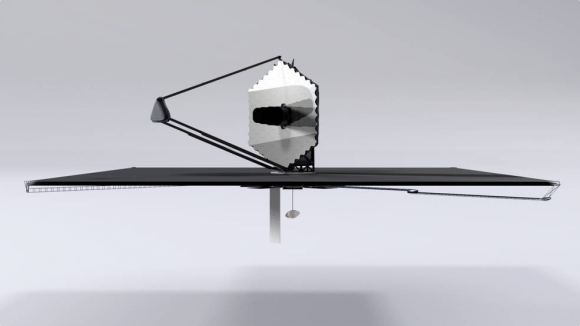
As part of the 2018 NAIC’s Phase I awards, which were announced on March 30th, the team was awarded $125,000 over a nine month period to conduct these studies. If these are successful, the team will be able to apply for a Phase II award. As Mason Peck, an associate professor of mechanical and aerospace engineering at Cornell and the former chief technology officer at NASA, indicated, Savransky is on the right track with his NIAC proposal:
“As autonomous spacecraft become more common, and as we continue to improve how we build very small spacecraft, it makes a lot of sense to ask Savransky’s question: Is it possible to build a space telescope that can see farther, and better, using only inexpensive small components that self-assemble in orbit?”
The target mission for this concept is the Large Ultraviolet/Optical/Infrared Surveyor (LUVOIR), a proposal that is currently being explored as part of NASA’s 2020 Decadal Survey. As one of two concepts being investigated by NASA’s Goddard Space Flight Center, this mission concept calls for a space telescope with a massive segmented primary mirror that measures about 15 meters (49 feet) in diameter.
Much like the JWST, LUVOIR’s mirror would be made up of adjustable segments that would unfold once it deployed to space. Actuators and motors would actively adjust and align these segments in order to achieve the perfect focus and capture light from faint and distant objects. The primary aim of this mission would be to discover new exoplanets as well as analyze light from those that have already been discovered to asses their atmospheres.
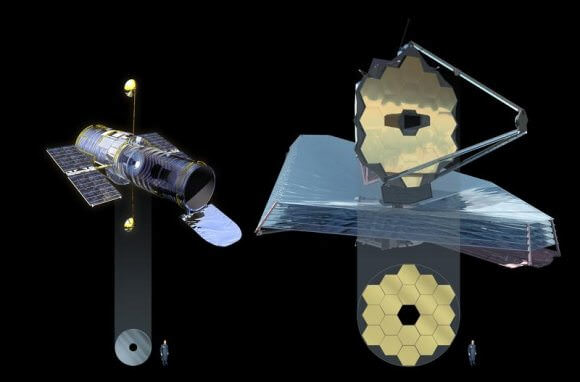
As Savransky and his colleagues indicated in their proposal, their concept is directly in line with the priorities of the NASA Technology Roadmaps in Science Instruments, Observatories, and Sensor Systems and Robotics and Autonomous Systems. They also state that the architecture is a credible means to construct a giant space telescope, which would not be possible for previous generations of telescopes like Hubble and the JWST.
“James Webb is going to be the largest astrophysical observatory we’ve ever put in space, and it’s incredibly difficult,” he said. “So going up in scale, to 10 meters or 12 meters or potentially even 30 meters, it seems almost impossible to conceive how you would build those telescopes the same way we’ve been building them.”
Having been granted a Phase I award, the team is planning to conduct detailed simulations of how the modules would fly through space and rendezvous with each other to determine how large the solar sails need to be. They also plan to conduct an analysis of the mirror assembly to validate that the modules could achieve the required surface figure once assembled.
As Peck indicated, if successful, Dr. Savransky’s proposal could be a game changer:
“If Professor Savransky proves the feasibility of creating a large space telescope from tiny pieces, he’ll change how we explore space. We’ll be able to afford to see farther, and better than ever – maybe even to the surface of an extrasolar planet.”
On June 5th and 6th, NASA will also be conducting an NIAC Orientation Meeting in Washington D.C., where all the Phase I winners will have a chance to meet and discuss their ideas. Other proposals that received a Phase I award include shape-shifting robots for exploring Titan, lightweight aerial sensors to explore Venus’ atmosphere, flapping-wing swarm robots to explore Mars, a new form of beam propulsion for interstellar missions (similar to Breakthrough Starshot), a steam-powered robot for ocean worlds, and a self-replicating habitat made from fungus.
You can read more about these concepts, as well as those that were given Phase II award, here.
Further Reading: Cornell Chronicle, NASA
Hosts:
Fraser Cain (universetoday.com / @fcain)
Dr. Paul M. Sutter (pmsutter.com / @PaulMattSutter)
Dr. Kimberly Cartier (KimberlyCartier.org / @AstroKimCartier )
Dr. Morgan Rehnberg (MorganRehnberg.com / @MorganRehnberg & ChartYourWorld.org)
Special Guests:
Dr. David Weintraub is the author of the new book, Life on Mars: What to Know Before We Go, in which he provides a history of our fascination with the Red Planet, as well as describes the the various moral issues that surround our desire to go there.
Dr. Weintraub is a Professor of Astronomy at Vanderbilt University where he serves as the Director of Undergraduate Studies, Department of Physics and Astronomy, Director of Communication of Science & Technology Program, and Co-Director of Scientific Computing Program.
In addition to his new book, Dr. Weintruab is the Co-series Editor, Springer, Springer Briefs in Astronomy and Undergraduate Lecture Notes in Physics, as well as the author of numerous other books, including Religions and Extraterrestrial Life: How Will We Deal With It?, How Old is the Universe?, and Is Pluto a Planet?
You can find out more about Dr. Weintraub on his webpage here.
Announcements:
If you would like to join the Weekly Space Hangout Crew, visit their site here and sign up. They’re a great team who can help you join our online discussions!
We record the Weekly Space Hangout every Wednesday at 5:00 pm Pacific / 8:00 pm Eastern. You can watch us live on Universe Today, or the Weekly Space Hangout YouTube page – Please subscribe!
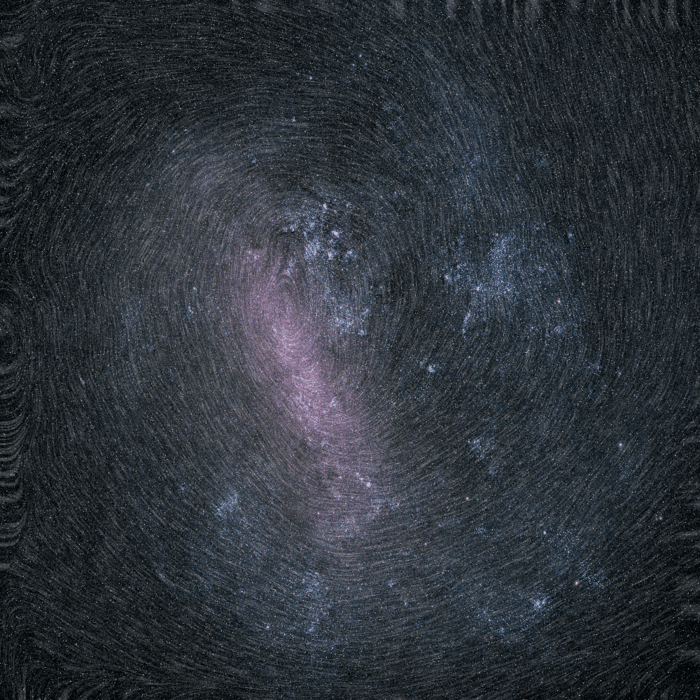
On December 19th, 2013, the European Space Agency’s (ESA) Gaia spacecraft took to space with for a very ambitious mission. Over the course of its planned 5-year mission (which was recently extended), this space observatory would map over a billion stars, planets, comets, asteroids and quasars in order to create the largest and most precise 3D catalog of the Milky Way ever created.
Since that time, the ESA has made two data releases that cover the first three years of the Gaia mission. The second data release, which took on April 25th, 2018, has already proven to be a treasure trove for astronomers. In addition to the positions, distance indicators and motions of over a billion stars and celestial objects in the Milky Way Galaxy, it also contained a hidden gem – the proper motions of stars within the Large Magellanic Cloud (LMC).
Located about 200,000 light-years from Earth, the LMC has dense clouds of dust that results in it experiencing high rates of star formation. In addition, it’s central bar is warped (where the east and west ends are nearer to the Milky Way), suggesting that it was once a barred dwarf spiral galaxy who’s spiral arms were disrupted by interaction with the Small Magellanic Cloud (SMC) and the Milky Way.
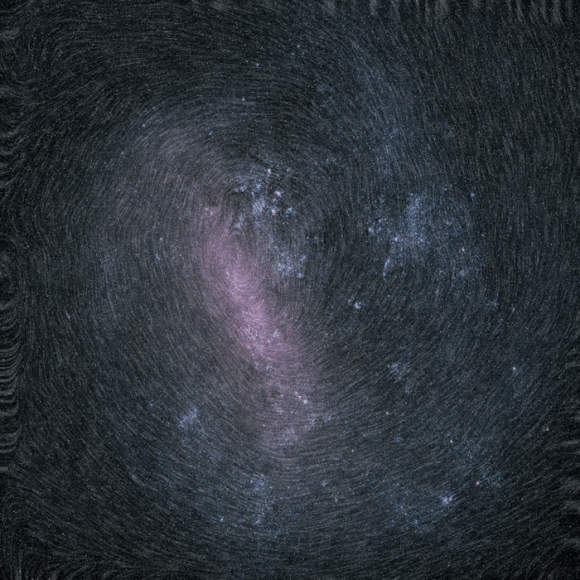
For these reasons, astronomers have been hoping to derive the orbits of dwarf galaxies (and globular clusters) that revolve around the Milky Way. In so doing, they hope to learn more about how our galaxy evolved due to mergers with clusters and other galaxies. By determining the proper motions of the LMC’s stars, the Gaia mission has provided clues as to how the Milky Way and its largest satellite galaxy have interacted over time.
As you can see from the image (at top), the bar of the LMC is outlined in great detail, along with individual star-forming regions like the Tarantula Nebula (aka. 30 Doradus, which is visible just above the center of the galaxy). The image combines the total amount of radiation detected by the observatory in each pixel. The radiation measurements were then taken through different filters on the spacecraft to generate color information.
This allowed Gaia to obtain information about the total density of stars within the LMC as well as their proper motions. As you can see, the image is dominated by the brightest, most massive stars, which greatly outshine their fainter, lower-mass counterparts. The proper motions of the stars observed is represented as the texture of the image – which looks a lot like a fingerprint.
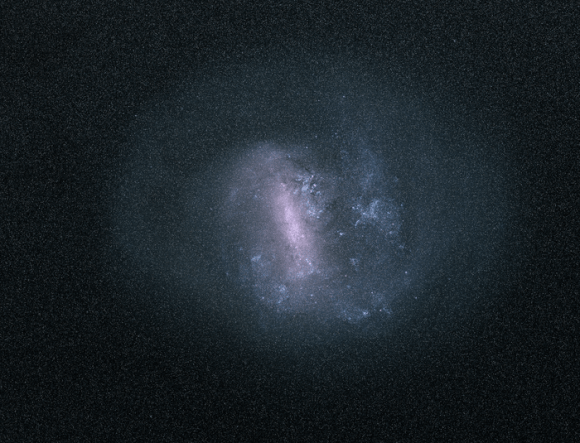
From this, scientists were able to see an imprint of the stars rotating clockwise around the center of the galaxy. Using this information, astronomers will be able to create new models on how the LMC, SMC, and Milky Way evolved together over time. This, in turn, could shed light on how galaxies like our own, formed and evolved over the course of billions of years.
As with other information contained in the first and second data releases, this latest discovery demonstrates that the Gaia mission is fulfilling its intended purpose. The third release of Gaia data is scheduled to take place in late 2020, with the final catalog being published in the 2020s. Meanwhile, an extension has already been approved for the Gaia mission, which will now remain in operation until the end of 2020 (to be confirmed at the end of this year).
And be sure to enjoy this animated view of the LMC’s rotation, courtesy of the ESA:
Further Reading: ESA
On October 19th, 2016, the European Space Agency’s Exobiology on Mars (ExoMars) mission established orbit around Mars. Consisting of the ExoMars Trace Gas Orbiter (TGO) and the Schiaparelli lander, the purpose of this mission is to investigate Mars for past signs of life. And whereas the Schiaparelli unfortunately crashed during deployment, the TGO has managed to begin its mission ahead of schedule.
A few weeks ago, the satellite achieved a near circular orbit around Mars after performing a series of braking maneuvers. Since that time, the orbiter’s Color and Stereo Surface Imaging System (CaSSIS) took a stunning image of the surface. This picture was not only the TGO’s first image of Mars, it was also a test to see if the orbiter is ready to being its main mission on April 28th.
The image captured a 40 km- (25 mi) long segment of the Korolev Crater, which is located high in Mars’ northern hemisphere. The image was a composite of three images in different colors that were taken simultaneously on April 15th, 2018, which were then assembled to produce this color image. The bright material that appears at the edge of the crater is water ice.

As Antoine Pommerol, a member of the CaSSIS science team working on the calibration of the data, explained in a recent ESA press release:
“We were really pleased to see how good this picture was given the lighting conditions. It shows that CaSSIS can make a major contribution to studies of the carbon dioxide and water cycles on Mars.”
Prior to the test phase, the camera team transmitted new software to the TGO, and after a few minor issues, they determined that the instrument was ready to work. The camera is one of four instruments on the TGO, which also carries two spectrometer suites and a neutron detector. The spectrometers began their science mission on April 21st by taking the first sample of the atmosphere to see how its molecules absorb sunlight.
By doing this, the TGO hopes to determine the chemical composition of Mars atmosphere and find evidence of methane and other trace atmospheric gases that could be signatures of active biological or geological processes. Eventually, the camera will help characterize features on the surface that could be related to trace gas sources. Hence the importance of this recent test.
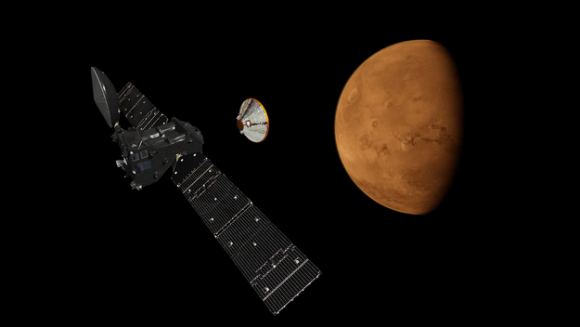
“We aim to fully automate the image production process,” said Nicolas Thomas, the camera’s principal investigator from the University of Bern. “Once we achieve this, we can distribute the data quickly to the science community for analysis.”
A lot of challenges lie ahead, which includes a long period of data collection to bring out the details of rare (or yet to be discovered) trace gases in Mars’ atmosphere. This is necessary since trace gases (as the name would suggest) are present in only very small amounts – i.e. less than 1% of the volume of the planet’s atmosphere. But as Håkan Svedhem – the ESA’s TGO project scientist – indicated, the test image was a good start.
“We are excited to finally be starting collecting data at Mars with this phenomenal spacecraft,” he said. “The test images we have seen so far certainly set the bar high.”
By 2020, the second part of the ExoMars mission is scheduled to launch. This will consist of a Russian surface platform and a European rover landing on the surface in support of a science mission that is expected to last into 2022 or longer. Alongside NASA’s proposed Mars 2020 rover, the Red Planet is due to have several more visitors in the coming years!
Further Reading: ESA
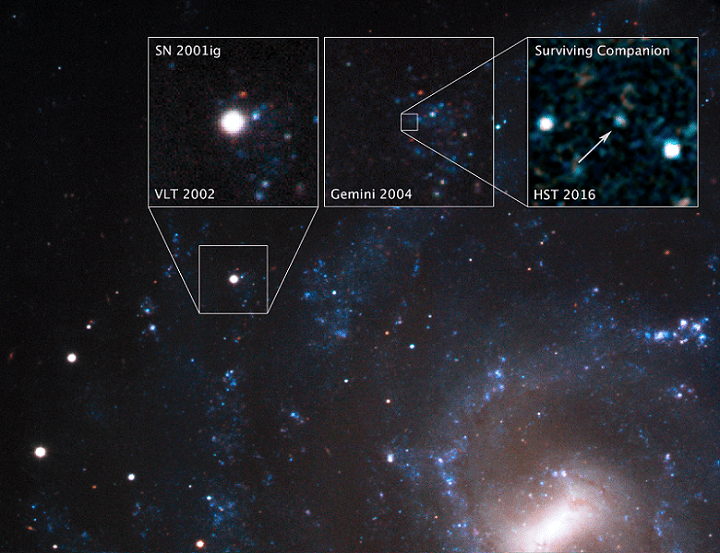
A Type II supernova is a truly amazing astronomical event. As with all supernovae, a Type II consists of a star experiencing core collapse at the end of its life cycle and exploding, causing it to shed its outer layers. A subclass of this type is known as Type IIb, which are stars that have been stripped of their hydrogen fuel and undergo collapse because they are no longer able to maintain fusion in their core.
Seventeen years ago, astronomers were fortunate enough to witness a Type IIb supernova in the galaxy NGC 7424, located 40 million light-years away in the southern constellation Grus. Now that this supernova has faded, the Hubble Space Telescope recently captured the first image of a surviving companion, thus demonstrating that supernovae do indeed happen in double-star systems.
The study, titled “Ultraviolet Detection of the Binary Companion to the Type IIb SN 2001ig“, was recently published in the Astrophysical Journal. The study was led by Stuart Ryder of the Australian Astronomical Observatory and included members from California Institute of Technology (Caltech), the Space Telescope Science Institute (STSI), the University of Amsterdam, the University of Arizona, the University of York, and the University of California.
This discovery is the most compelling evidence to date that some supernovae originate as a result of siphoning between binary pairs. As Stuart Ryder indicated in a recent NASA press release:
“We know that the majority of massive stars are in binary pairs. Many of these binary pairs will interact and transfer gas from one star to the other when their orbits bring them close together.”
The supernova, called SN 2001ig, was pinpointed by astronomers in 2002 using the European Southern Observatory’s Very Large Telescope (VLT). In 2004, these observations were followed-up with the Gemini South Observatory, which first hinted at the presence of a surviving binary companion. Knowing the exact coordinates, Ryder and his team were able to focus Hubble on that location as the supernova’s glow faded.
The find was especially fortuitous because it might also shed light on a astronomical mystery, which is how stripped-envelop supernovae lose their outer envelopes. Originally, scientists believed they were the result of stars with very fast winds that pushed off their outer envelopes. However, when astronomers began looking for the primary stars which spawned these supernovae, they could not find them.
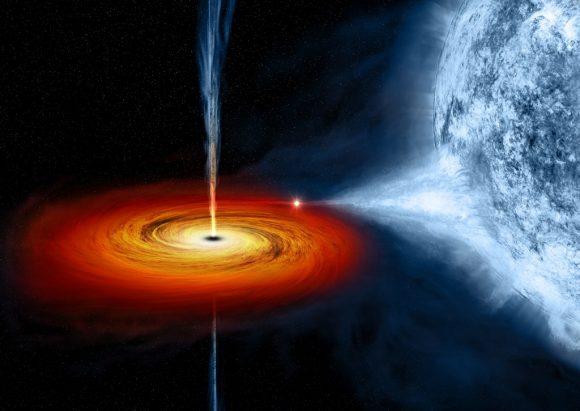
As Ori Fox, a member of the Space Telescope Science Institute and a co-author on the paper, explained:
“That was especially bizarre, because astronomers expected that they would be the most massive and the brightest progenitor stars. Also, the sheer number of stripped-envelope supernovas is greater than predicted.”
This led scientists to theorize that many of the stripped-envelop stars were the primary in lower-mass binary star systems. All that remained was to find a supernova that was part of a binary system, which Ryder and his colleagues set out to do. This was no easy task, seeing as how the companion was rather faint and at the very limits of what Hubble could see.
In addition, not many supernovae are known to go off within this distance range. Last, but not least, they had to know the exact position through very precise measurements. Thanks to Hubble’s exquisite resolution and ultraviolet capability, they were able to find and photograph the surviving companion.
Prior to the supernova, the stars orbited each other with a period of about one year. When the primary star exploded, it had an impact on the companion, but it remained intact. Because of this, SN 2001ig is the first surviving companion to ever be photographed.
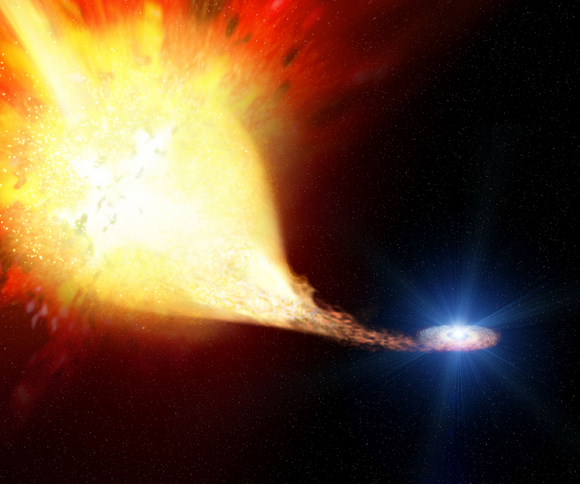
Looking ahead, Ryder and his team hope to precisely determine how many supernovae with stripped envelopes have companions. At present, it is estimated that at least half of them do, while the other half lose their outer enveloped due to stellar winds. Their next goal is to examine completely stripped-envelope supernovae, as opposed to SN 2001ig and SN 1993J, which were only about 90% stripped.
Luckily, they won’t have to wait as long to examine these completely stripped-envelope supernovae, since they don’t have as much shock interaction with gas in their surrounding environment. In short, since they lost their outer envelopes long before they exploded, they fade much faster. This means that the team will only have to wait two to three years before looking for the surviving companions.
Their efforts are also likely to be helped by the deployment of the James Webb Space Telescope (JWST), which is scheduled to launch in 2020. Depending on what they find, astronomers may be ready to resolve the mystery of what causes the different types of supernovae, which could also reveal more about the life cycles of stars and the birth of black holes.
Further Reading: NASA, The Astrophysical Journal